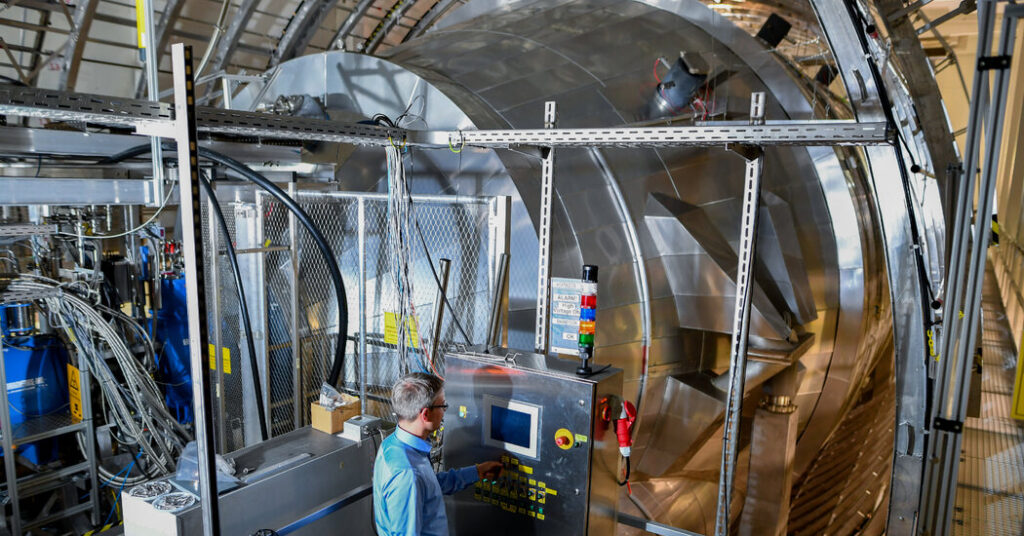Neutrinos Are Shrinking, and That’s a Good Thing for Physics
A new estimate of the ghostly particle’s maximum possible mass brings physicists a tad closer to understanding the universe.


A new estimate of the ghostly particle’s maximum possible mass brings physicists a tad closer to understanding the universe.
On Thursday, researchers unveiled the most precise measurement yet of a neutrino, scaling down the maximum possible mass of the ghostly specks of matter that permeate our universe.
The result, published in the journal Science, does not define the exact mass of a neutrino, just its upper limit. But the finding helps bring physicists closer to figuring out just what is wrong with the so-called Standard Model, their best — albeit incomplete — theory of the laws that rule the subatomic realm. One way physicists know it is not quite accurate is that it suggests that the neutrino should not have any mass at all.
At grander scales, learning more about neutrinos will help cosmologists fill in their ever hazy picture of the universe, including how galaxies clustered together and what influences the expansion of the cosmos since the Big Bang.
“We’re looking at trying to understand why we are here,” said John Wilkerson, a physicist at the University of North Carolina, Chapel Hill and an author of the new study. “And that’s something neutrinos may have a key role in.”
Physicists know a few things about neutrinos. They are prolific across the cosmos, created virtually anytime atomic nuclei snap together or rip apart. But they carry no electric charge and are notoriously difficult to detect.
Neutrinos also come in three types, which physicists describe as flavors. And, oddly, they morph from one flavor to another as they move through space and time, a discovery recognized by the Nobel Prize in Physics in 2015. The underlying mechanism that makes these transformations possible, physicists realized, meant that neutrinos must have some mass.





